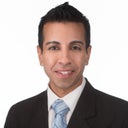Posted underBreast Implant Revision q&a
I have 450 High Profile Mentor I want to change to Ultra High Profile. Which one is the CC should I choose?
Hi, I have breast augmentation 450cc High Profile Mentor memory gel, but after one year and three months of surgery my breast looks asymmetric, the doctor tell me I need a revision surgery. I want to change the implants in this second surgery, I want now Ultra High Profile, really want change I don't want to lose volume, that although I want to have the rounder breast forward, more full, I want them to continue to be the same size, now I am 32DDD. Which one is the cc to chose? Thank you.
Answers (7)
From board-certified doctors and trusted medical professionals
Dr. Dallas Buchanan, MD

Dr. Dallas Buchanan, MD
Board Certified Plastic Surgeon
Answer
Dr. Urmen Desai, MD, MPH, FACS

Dr. Urmen Desai, MD, MPH, FACS
Board Certified Plastic Surgeon
Answer
Dr. Daniel Barrett, MD

Dr. Daniel Barrett, MD
Board Certified Plastic Surgeon
Answer
Dr. Darryl J. Blinski, MD
Dr. Darryl J. Blinski, MD
Board Certified Plastic Surgeon
Answer
Dr. Tom J. Pousti, MD
Dr. Tom J. Pousti, MD
Board Certified Plastic Surgeon
Answer
Answered on Apr 3, 2019
Answer
More Breast Implant Revision Questions
See all Breast Implant Revision Q&AWE SEND PRETTY
EMAILS
What’s trending? Who’s turning heads? Which TikTok myths need busting? We’ve got you. No fluff, no gatekeeping—just real talk. Get our free, unfiltered newsletter.
